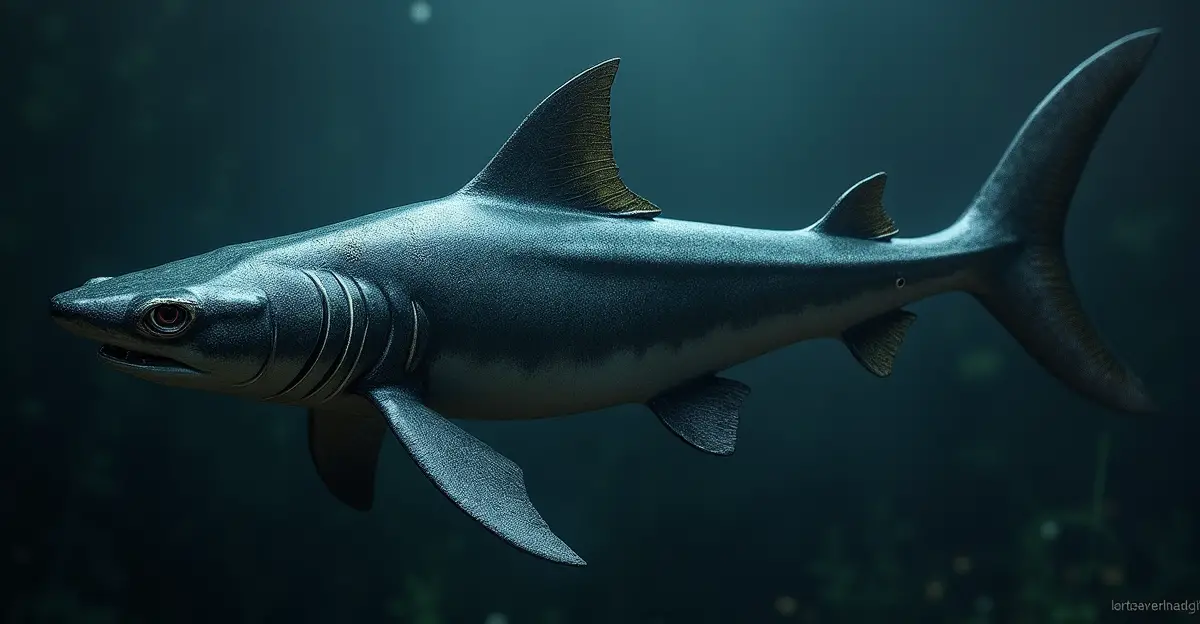The ocean is home to some of the most fascinating creatures on Earth, and among them is a truly unique species: the Dwarf Lanternshark (Etmopterus perryi). This tiny, bioluminescent marvel has captured the curiosity of researchers and nature lovers alike. From its remarkable adaptations to its mysterious habitat in the deep sea, the Dwarf Lanternshark offers a glimpse into the extraordinary and often hidden world of Earth’s marine biodiversity. Let’s explore the captivating story of this elusive shark and its significance in the vast underwater ecosystem.
Physical Characteristics of the Dwarf Lanternshark
Tiny but Mighty
When we think of sharks, we often envision massive predators like the great white shark. However, the Dwarf Lanternshark shatters this stereotype by being the world’s smallest shark. Measuring only 6–8 inches long, this minuscule shark could fit snugly in the palm of your hand. With an elongated body, the shark’s size and shape are perfectly tailored for survival in deep-sea environments.
Bioluminescence: Nature’s Glow Stick
The Dwarf Lanternshark’s ability to emit a bluish-green glow is one of its most fascinating features. It achieves this luminescence through photophores, specialized light-producing organs located on its belly and fins. Scientists suggest this glow serves multiple purposes, such as providing camouflage by blending with filtered sunlight, attracting prey, or communicating with other lanternsharks.
To better understand this, check out this informative YouTube video: Creature Catalog: Dwarf Lanternshark. The video delves into the shark’s unique appearance and adaptations.
Distinctive Features
In addition to bioluminescence, the Dwarf Lanternshark is marked by its dark brown to black coloration, allowing it to easily blend into its shadowy environment. Equipped with large, highly sensitive eyes, it can detect faint light rays, a vital adaptation for life in the ocean depths.
API STRESS COAT Aquarium Water Conditioner 16-Ounce Bottle
Tetra AquaSafe Plus, 8.45 Ounces, aquarium Water Conditioner And Dechlorinator, Model Number: 46798162681
$10.19 (as of December 14, 2025 08:19 GMT +03:00 - More infoProduct prices and availability are accurate as of the date/time indicated and are subject to change. Any price and availability information displayed on [relevant Amazon Site(s), as applicable] at the time of purchase will apply to the purchase of this product.)API TAP WATER CONDITIONER Aquarium Water Conditioner 16-Ounce Bottle
$8.48 (as of December 14, 2025 08:19 GMT +03:00 - More infoProduct prices and availability are accurate as of the date/time indicated and are subject to change. Any price and availability information displayed on [relevant Amazon Site(s), as applicable] at the time of purchase will apply to the purchase of this product.)Habitat and Distribution
Deep-Sea Dwellers
Living in the twilight zone, the Dwarf Lanternshark prefers depths that range from 200 to 1000 feet. This elusive species is primarily found off the coasts of Colombia and Venezuela. These remote deep-sea habitats are challenging to study, often requiring advanced submersible technology to access.
Challenges in Understanding Their Habitat
Due to their remote environment, much of what researchers know about the Dwarf Lanternshark stems from specimens caught inadvertently during deep-sea fishing expeditions. Their small size and nocturnal habits add another layer of mystery to their biology and ecological role.
Behavior and Diet
Stealthy Hunters in the Dark
Acting as nocturnal predators, Dwarf Lanternsharks likely hunt small prey such as crustaceans, plankton, and tiny fish. Their glowing camouflage and stealth aid them in capturing food under the cover of darkness.
Role in the Ecosystem
Although small, the Dwarf Lanternshark contributes significantly to the marine ecosystem’s balance. By preying on smaller organisms and serving as prey for larger marine predators, it upholds the delicate food web of its environment. According to Dwarf Lantern Shark | Smithsonian Ocean, this species underscores the rich biodiversity of the deep sea.
Survival in the Deep Sea
The Dwarf Lanternshark’s deep-sea habitat presents extreme challenges, including freezing temperatures, high water pressure, and scarce food resources. Despite these harsh conditions, the shark has evolved remarkable adaptations, from its bioluminescent photophores to its streamlined energy-efficient body, enabling survival in this unforgiving environment.
Conservation Considerations
Human activities like deep-sea fishing and habitat disturbances threaten the survival of the Dwarf Lanternshark. With limited data on its population, conservation efforts are hindered by the lack of research. Raising awareness and enforcing sustainable fishing practices are crucial steps towards preserving this enigmatic species.
Fun Facts About the Dwarf Lanternshark
- The Dwarf Lanternshark is the world’s smallest shark, growing to an average size of about 6–8 inches.
- Its bioluminescent glow is a rare feature, setting it apart from most other shark species.
- Specimens are rarely collected, adding to its mysterious reputation.
- It belongs to a family of glowing sharks known for their otherworldly abilities.
Conclusion
Although small in size, the Dwarf Lanternshark is a giant when it comes to intrigue. Its glowing body, deep-sea habitat, and elusive nature make it a subject of fascination for marine biologists and enthusiasts alike. By studying and protecting this rare shark, we deepen our understanding of ocean biodiversity and the importance of conservation in preserving even the smallest of Earth’s wonders.
The story of the Dwarf Lanternshark teaches us about the resilience of life in extreme environments and underscores our responsibility to ensure the survival of these hidden gems of the sea.

Hi, my name is Sean, and I’m the primary writer on the site. I’m blogging mostly about freshwater and saltwater aquariums, fish, invertebrates, and plants. I’m experienced in the fishkeeping hobby for many years. Over the years I have kept many tanks, and have recently begun getting more serious in wanting to become a professional aquarist. All my knowledge comes from experience and reading forums and a lot of informative sites. In pursuit of becoming a professional, I also want to inspire as many people as I can to pick up this hobby and keep the public interest growing.
Read more about Sean.
Please join also my Facebook group.




















